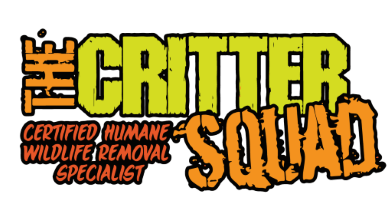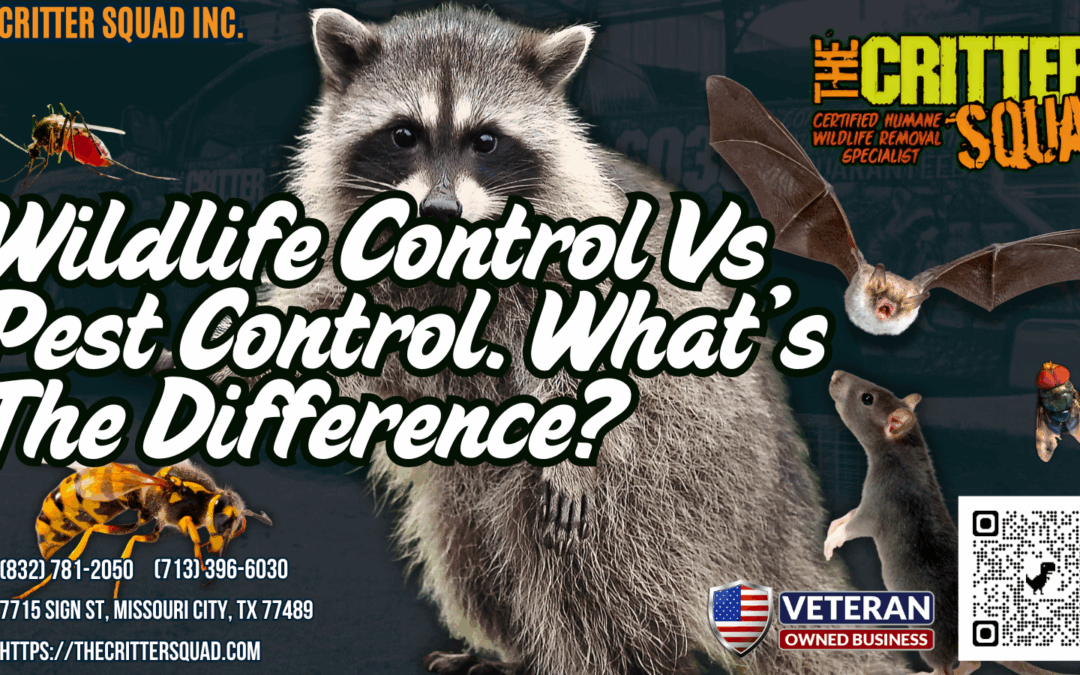Wildlife control and pest control serve different purposes concerning human-animal interactions. Wildlife control focuses on larger animals, emphasizing humane relocation and ecological balance. In contrast, pest control targets smaller organisms, often prioritizing eradication methods. Regulations governing these practices differ, with wildlife control under stricter guidelines. Additionally, the strategies used reflect contrasting objectives, such as habitat modification in wildlife control versus integrated pest management in pest control. A deeper exploration reveals the complexities and methods within each field.
Key Article Highlights
- Wildlife control focuses on larger animals and emphasizes humane relocation, while pest control targets smaller organisms, often employing extermination methods.
- Regulations governing wildlife control are stricter than those for pest control, reflecting differing ethical considerations and objectives.
- Wildlife control prioritizes ecological balance and coexistence, whereas pest control often aims for eradication of pests affecting health and property.
- Methods in wildlife control include humane trapping and habitat modification, while pest control employs integrated pest management and biological controls.
- Community education is crucial in wildlife control to promote coexistence, while pest control emphasizes early detection and prevention of infestations.
Understanding Wildlife Control
Wildlife control encompasses a systematic approach to managing the interactions between humans and various animal species that may encroach upon urban or suburban environments. This practice relies on understanding wildlife habitats and the natural behaviors of animals, which often adapt to the presence of humans. By observing animal behavior, wildlife control professionals can develop strategies to mitigate conflicts while preserving ecological balance. Techniques may include habitat modification, exclusion methods, and relocation, all aimed at reducing human-wildlife encounters without causing harm. Effective wildlife control also emphasizes community education, promoting coexistence and respect for the ecological roles these animals play. Additionally, understanding common opossum behavior can help in identifying and addressing potential conflicts effectively. For instance, recognizing signs of raccoons in house can lead to timely intervention before significant damage occurs. Moreover, employing humane bat removal techniques ensures that bats are safely excluded from homes without harming them. Ultimately, the goal is to foster a harmonious relationship between human populations and wildlife, ensuring both can thrive in shared spaces. Implementing humane raccoon trapping methods can also significantly reduce the discomfort caused by raccoons in residential areas.
The Role of Pest Control
Pest control plays an essential role in managing organisms that can adversely affect human health, property, and agriculture. Effective pest management strategies are fundamental in mitigating the risks associated with infestations, which can lead to significant economic losses and health hazards. By employing a combination of preventive measures and targeted interventions, pest control professionals aim to minimize the presence of harmful pests. These strategies often involve monitoring pest populations, identifying potential entry points, and utilizing appropriate control methods. Infestation prevention is a primary goal, ensuring that pest issues are addressed before they escalate. Additionally, understanding rat behavior can help in implementing more effective control measures. For instance, recognizing the signs of bat nesting can aid in preventing potential infestations. Overall, pest control serves as an indispensable service that protects communities, supports agricultural productivity, and enhances the quality of life by promoting healthier environments. Additionally, rat removal services are crucial for addressing specific rodent infestations that can pose serious health risks.
Key Differences Between Wildlife and Pest Control
While both wildlife control and pest control aim to manage organisms that can pose risks to human health and safety, the approaches and objectives differ markedly. Wildlife control focuses on understanding wildlife behavior, often prioritizing humane methods to relocate or deter animals, while pest control primarily involves pest identification and eradication strategies that may include chemical treatments.
Key differences include:
- Target Species: Wildlife control deals with larger animals like raccoons or deer, whereas pest control targets smaller organisms such as insects or rodents.
- Approach: Wildlife control often emphasizes humane relocation, while pest control may use extermination methods.
- Regulations: Wildlife control is typically governed by stricter regulations due to conservation efforts, unlike pest control, which has more flexible guidelines.
Methods Used in Wildlife Control
Various methods are employed in wildlife control to effectively manage and mitigate conflicts between humans and animals. Humane trapping is one of the primary techniques, allowing for the safe capture and relocation of wildlife without causing harm. This method guarantees that animals are handled with care, promoting ethical treatment. Additionally, habitat modification plays an essential role in preventing wildlife incursions. By altering the environment—such as securing garbage, closing entry points, and reducing attractants—humans can minimize encounters with wildlife. This proactive approach not only protects human interests but also fosters coexistence with local fauna. Employing these methods reflects a commitment to responsible wildlife management, balancing human needs with the welfare of animals.
Effective Pest Control Techniques
Effective pest control techniques encompass a range of strategies designed to manage infestations while minimizing harm to the environment and human health. A systematic approach, known as integrated pest management (IPM), combines various methods for ideal results.
- Natural Repellents: Utilizing plant-based substances can deter pests without toxic chemicals, promoting eco-friendliness.
- Cultural Practices: Altering habitat conditions—such as proper sanitation and landscape management—can greatly reduce pest attraction and breeding.
- Biological Controls: Introducing natural predators helps maintain pest populations at manageable levels, fostering a balanced ecosystem.
These techniques not only address immediate pest issues but also support long-term sustainability, ensuring a healthier environment for communities and future generations.
Frequently Asked Questions
Can Wildlife Control Be Done Without Harming the Animals?
The question of whether wildlife control can occur without harming animals highlights the importance of humane trapping techniques. Effective practices often involve wildlife rehabilitation, ensuring that animals are safely relocated and supported, minimizing stress and injury.
What Licenses Are Required for Wildlife Control Professionals?
In an era reminiscent of early conservation efforts, understanding wildlife regulations reveals that wildlife control professionals typically require specific licensing requirements, ensuring their practices align with ethical standards and promote humane treatment of animals within their jurisdiction.
Are Pest Control Methods Safe for Pets and Children?
Pest control methods often raise concerns regarding pet safety and child safety. Evaluating the toxicity of substances used and adhering to guidelines can mitigate risks, ensuring the environment remains safe for both pets and children.
How Do I Know if I Have a Wildlife Issue?
How can one determine the presence of wildlife in their vicinity? Observing wildlife signs such as tracks, droppings, or unusual animal behavior can indicate a potential issue, prompting further investigation to guarantee safety and well-being.
What Should I Do if I Encounter a Wild Animal?
Upon encountering a wild animal, individuals should prioritize safety precautions, observing the animal’s behavior from a distance. Understanding the species’ tendencies can inform responses, ensuring both personal safety and respect for wildlife during the encounter.

